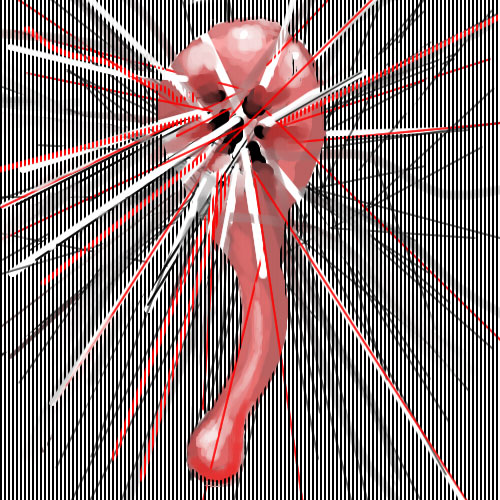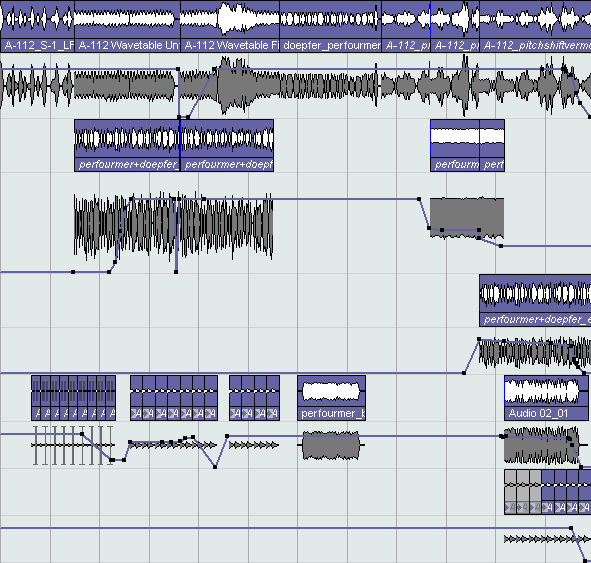
re-posting this drawing I did on computers club drawing society
Writer and technology theorist Alan N. Shapiro participated in a Geert Lovink-initiated conference a couple of years ago on the topic of Wikipedia. Against a chorus of intellectuals bemoaning the small pedantic minds that now shape our discourse, Shapiro proposed making changes to Wikipedia from within and kept a diary of his accepted and rejected language. His chosen topics included Star Trek and Baudrillard.
His "Diary of a Young Wikipedian" appears in the conference publication [link to PDF] and is also republished on his blog (unfortunately without blockquotes so it's hard to tell where sections start and end). The diary includes some sidelines into other conference-related topics, including a "further reading" recommendation he made on the conference mailing list. In response to the recommendation, the following comment was made on the list:
Alan,
So where would you want to go with this? The links that you gave debouch, as they say, onto a very wide field, most of which is far more interesting than the Wikipedestrian defile on whose fruits we currently gorge -- or gag. To your new rhetoric I might well add the golden oldie of Peircean semiotic, but what would be the first critical step in the application to wikioid media?
Jon Awbrey
This kind of breezy academicspeak seems endemic to listServs (after writing it one imagines Awbrey sallying forth in search of some cheese-y comestibles) but Shapiro replied politely. Regarding sign-theorist Charles Peirce (see Wikipedia) Shapiro writes:
...Peirce is the best semiotician, better than Eco or Derrida or Baudrillard or Greimas or Jakobsen, because his viewpoint includes everything about the chains of signs and signifiers that is in their systems, but Peirce also emphasizes meaning, the referent of the sign.
The hypertext cultural theory crowd of the 1990s of Landow, Bolter, Brown University, etc. didn't really get Peirce. A Derrida-only-inspired view of hypertext is exposed to a kind of nihilism of the chain of signifiers, it seems to me.
That explanation came at the tail end of a fine rant by Shapiro on the current internet as a meaning-free zone:
I believe that a Peircian semiotic could be implemented on the Internet (or a successor to the Internet), and that this a very worthwhile goal. A sort of Peircian emphasis on content, meaning, or deep referent as counterpoint to what is currently happening on the Internet, which is the nightmare realization of the fundamental media-theory-insight of McLuhan-Baudrillard that "the medium is the message" gone haywire, on drugs, so to speak. Content means nothing right now. Everything is links, links, links, where can i get my website or blog linked or ping-backed to as many other websites as possible. And this happening in the context of the rampant reign of Homo Economicus. More links to my website equals more visitors equals higher google ranking equals the dream of the pot of gold.
Any chat of any kind today immediately deteriorates into: are you on Facebook?, are you registered at the Huffington Post?, do you have Skype?, MSN?, Yahoo Messenger?, etc. Meet me at odesk or elance and let's get exploited together. That's a nice app you've got, but does it run on iPad? Nice book there, but it is on Kindle? The media that overwhelms the message was TV for McLuhan-Baudrillard. Today that fetishized media is Facebook, skype, MSN, etc.
And add to that list the fetish of "just the facts, ma'am" of the Wikipedia gatekeepers.

meant to post this a while back - it's the cubase project window for "Electro Suite No. 2" - i kept making edits to the music so this is the final screenshot. This version of cubase isn't that old (4 years) but I like how low-res the timeline is - am sure it would be fancier but for music editing you really don't want your graphics eating up processing time...
Each of these YouTube-mounted vids re-presented on a white space gallery site consists of a few basic elements. MIDI tunes with reverb or other spatial enhancements, existing somewhere between Satie's "furniture music," Mark Mothersbaugh's "Music for Insomniacs," and pompous corporate training films, anchor a series of found internet photos edited together into quasi-narratives using cheesy pans, wipes, dissolves, and morphs -- the whole arsenal of inexpensive video effects. The editing isn't MTV-rapid but slow and deliberate. Often we're asked to look at the same thing over and over.
There's a scene in Hitchcock's Rear Window where James Stewart puts down his telephoto lens, stops spying on his neighbors for a minute and observes that life can be depressing (not an exact quote and possibly Grace Kelly says it). The internet encourages consensual voyeurism and it only gets depressing when the member of one clan (say, worried artists) spies on another (people who photograph their toddlers in clothes hampers). Lonergan crosses and re-crosses this divide, not in a completely malicious way, but he certainly looks longer than you or I might.
What turns spying on the lumpenproletariat into a brilliant exercise is the creation of false stories. What is the cup game played by a quartet of college sophomores that involves occasionally standing up and kicking something? (Is this a real game?) Did the internet begin with a map of the world made of ceiling tiles, arranged on the floor? How much practice photographing strawberries did it take before the shutterbug was ready for a big spread on a trade show floor?
Other videos direct our attention to details of photos no one else is paying attention to, such as the Ansel Adams poster behind another group of frolicking college boys. Occasionally the narratives stray into the political, such as the photo-collection of people in T-shirts with conspicuous major oil company logos doing some sort of "habitat for humanity" project. Amateur aspirations are consistently acknowledged, in the manner of Michael Smith's videos such as "World of Photography" (made with William Wegman) -- for example, the assortment of terrible photos of foreshortened rulers used to demonstrate "depth of field." Lonergan's well-written music consistently adds a mood of portentousness and false drama to the most tedious of these proceedings.
Highly recommended.
Update: More
Update 2: Link to online exhibition updated. The gallery hosts the show for a couple of weeks and then makes the artist do it (?).
"Reggaebot Mutation" [mp3 removed]
MIDI tunes played with modular synth patches (chords with short decay times), run through the Mutator filter or not. Also softsynth drums with digital reverb, and softsynth "tremelo organ." 130 bpm, 3/4 time, tried to make everything a little "off."